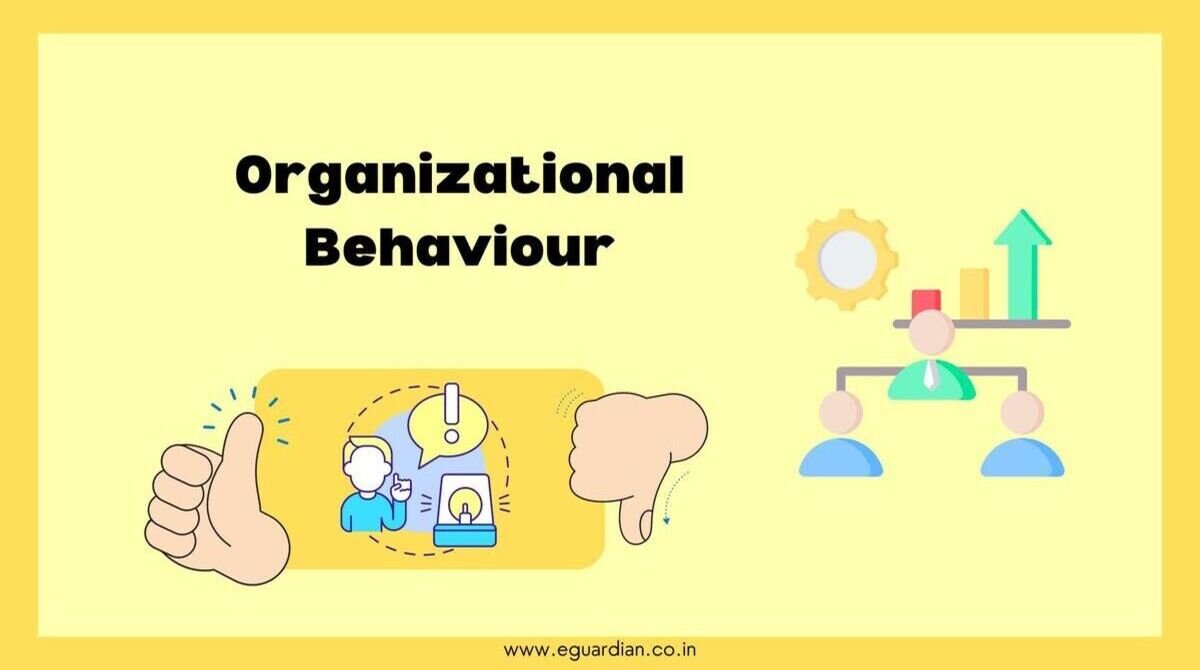The Maintenance Management MCQs Quiz is just what you need! This quiz has 50 questions that cover important topics in maintenance management.
Are you looking for a fun and challenging way to keep your maintenance team organized and up-to-date on the latest techniques?
After you complete the quiz, you will be able to see where you need more training and resources. Finally, the quiz provides helpful answers that will help you perfect your skills.
Maintenance Management MCQs with Answers
Q. No 1. What are the aspects that need to be considered by an organization while formulating an asset strategy?
a. Business plan
b. Business model and plan
c. Strategies involved
d. Philosophy
Answer: b. Business model and plan
Q. No 2. Which one is the building block of a business model?
a. Stakeholder needs
b. Customer segment
c. Corporate plan
d. Production philosophy
Answer: b. Customer segment
Q. No 3. The corporate philosophy helps an organization to determine its strengths, work upon its weaknesses, exploit opportunities available in the market, and mitigate threats. This is related to:
a. Achieving a competitive position
b. Increased efficiency and optimized cost
c. Improved safety in the workplace
d. Fulfilling stakeholders’ needs
Answer: a. Achieving a competitive position
Q. No 4. Maintenance helps an organization to ensure the health and safety of employees through:
a. Hazard identification and management
b. Achieving a competitive position
c. Increased efficiency and optimized cost
d. Improved safety at the workplace
Answer: a. Hazard identification and management
Q. No 5. Which of the following is a basis on which an organization creates and delivers value to its stakeholders?
a. Corporate plan
b. Production philosophy
c. Stakeholder needs
d. Business model and plan
Answer: d. Business model and plan
Q. No 6. ‘It is a production strategy aimed at improving an organization’s return on investment by reducing inventory and carrying costs.’ This is related to:
a. Just-in-time
b. Lead manufacturing
c. Hazard identification and management
d. Achieving a competitive position
Answer: a. Just-in-time
Q. No 7. What do we call a process of dividing customers having similar needs, preferences, or characteristics into identifiable groups?
a. Lead manufacturing
b. Hazard identification and management
c. Achieving a competitive position
d. Market segmentation
Answer: d. Market segmentation
Q. No 8. Which includes the modes of earning revenues used by organizations?
a. Revenue stream
b. Key resources
c. Key activities
d. Key partners
Answer: a. Revenue stream
Q. No 9. Which is a formal approach to increase the efficiency of the entire maintenance system by creating a balance between resources and requirements of maintenance?
a. Maintenance optimization
b. Precision maintenance
c. Maintainability improvement
d. Equipment improvement
Answer: a. Maintenance optimization
Q. No 10. Who of the following is responsible for the maintenance of computer systems in an organization?
a. Network administrators
b. Office administrators
c. Store officers
d. Computer administrators
Answer: a. Network administrators
Q. No 11. KPI should be established to measure quality rather than the amount of work to be done to attain that quality. This indicates that a KPI should be:
a. Qualitative
b. Quantitative
c. Ambiguous
d. Complex
Answer: a. Qualitative
Q. No 12. Which is the expected time duration between inherent failures of a machine or equipment while in use?
a. MTBF
b. MTBR
c. MRBF
d. MTSI
Answer: a. MTBF
Q. No 13. MTTR is estimated to:
a. Determine the actual repair work required
b. Determine work maintenance
c. Calculate labor cost
d. Estimate the time required in marketing
Answer: a. Determine the actual repair work required
Q. No 14. Costs incurred on the maintenance of machines and equipment to keep them available for use as required are:
a. Labour cost
b. Maintenance costs
c. Machine cost
d. Raw material cost
Answer: a. Labour cost
Q. No 15. An ability of a machine or equipment to produce products that conform to defined specifications and are free of defects, thereby achieving customer satisfaction is known as:
a. Software technology
b. Machine quality
c. Machine tools
d. Machine spare parts
Answer: b. Machine quality
Q. No 16. A machine is said to be a quality machine if it meets the following requirements:
a. No downtime
b. No uptime
c. Working efficiency
d. Machine working
Answer: a. No downtime
Q. No 17. To ensure the quality of their machines and equipment, organizations need to focus on:
a. Low cost of production
b. Conformance to machine specifications
c. Repair and maintenance
d. Cost incurred
Answer: b. Conformance to machine specifications
Q. No 18. An uninterrupted flow of production means:
a. Low cost
b. Efficient machines
c. Repair and maintenance
d. Cost incurred
Answer: b. Efficient machines
Q. No 19. ___ mainly includes shortcomings in inventory processes, systems, and procedures.
a. Material control issues
b. Operating issues
c. Employee issues
d. Admin issues
Answer: a. Material control issues
Q. No 20. What are the reasons for machine failure?
a. Obsolescence
b. Staining
c. Fade of shades
d. Discoloration
Answer: a. Obsolescence
Q. No 21. The expected time for restoring machines and equipment back to their working condition is-
a. MTBF
b. MTBR
c. MRBF
d. MTTR
Answer: d. MTTR
Q. No 22. What results in degradation and in-machine failure due to friction, wear, and tear, or lack of lubrication?
a. Corrosion
b. Mechanical wear
c. Obsolescence
d. Surface degradation
Answer: d. Surface degradation
Q. No 23. What are the factors that influence the reliability and maintainability of machines?
a. Surface degradation
b. Frequency of machine usage
c. The life span of the machine
d. Obsolescence
Answer: b. Frequency of machine usage
Q. No 24. To identify a particular defect responsible for a failure using the logical diagnostics process, the personnel must:
a. Have the ability to follow a particular routine for logical diagnostics.
b. Check the entire length of the hosepipe for any blockage
c. Identify possible defects and prepare a list of defects
d. Ensure that no water is coming out of the hosepipe
Answer: a. Have the ability to follow a particular routine for logical diagnostics
Q. No 25. What involves measuring the different parameters of machines and equipment, such as temperature, vibration, oil pressure and debris, and running performance?
a. Condition monitoring
b. Machine monitoring
c. Fuel monitoring
d. Oil monitoring
Answer: a. Condition monitoring
Q. No 26. Which one is a type of condition monitoring?
a. Thermometer monitoring
b. Offline Monitoring
c. Machine monitoring
d. Fuel monitoring
Answer: b. Offline Monitoring
Q. No 27. In which of the following the condition of machines is monitored and recorded at pre-defined intervals?
a. Online monitoring or permanent monitoring
b. Machine monitoring
c. Offline monitoring or periodic monitoring
d. Record monitoring
Answer: c. Offline monitoring or periodic monitoring
Q. No 28. Which one is a technique of condition monitoring?
a. Vibration condition monitoring
b. Stable condition monitoring
c. Suspended monitoring
d. Wastage monitoring
Answer: a. Vibration condition monitoring
Q. No 29. Which one is the component of MCSA?
a. A current transformer (CT) for sensing signals in the motor.
b. Vibration condition monitoring
c. Stable condition monitoring
d. Suspended contaminants present in the oil
Answer: a. A current transformer (CT) for sensing signals in the motor
Q. No 30. Lubricant analysis is:
a. Vibration condition monitoring
b. A technique of condition monitoring
c. A method of stable condition monitoring
d. A tool to suspended contamination
Answer: b. A technique of condition monitoring
Q. No 31. ‘Deciding the type of condition monitoring’ is the first step of:
a. Condition monitoring program
b. Vibration condition monitoring
c. Stable condition monitoring
d. Lubrication analysis
Answer: a. Condition monitoring program
Q. No 32. Sudden breakdown or failure results in considerable production loss represent which level of failure of machines?
a. Highly critical
b. Medium critical
c. Low critical
d. Normal
Answer: a. Highly critical
Q. No 33. Which factors should be considered while selecting condition monitoring techniques?
a. Environment of machine’s operation
b. Labour cost
c. Human resource’s personal background
d. Intervals
Answer: a. Environment of machine’s operation
Q. No 34. What are the main objectives of adopting preventive maintenance?
a. To reduce machine breakdowns
b. To increase machine breakdowns
c. To slash productivity
d. To reduce absenteeism
Answer: a. To reduce machine breakdowns
Q. No 35. Which is related to the need for preventive maintenance?
a. Off-time production
b. Increased automation
c. Reduce machine breakdowns
d. Increased machine breakdown
Answer: b. Increased automation
Q. No 36. Which one is the task in preventive maintenance?
a. Automation
b. Lubrication
c. Machine breakdown
d. Condition monitoring
Answer: b. Lubrication
Q. No 37. A type of preventive maintenance wherein maintenance work is performed at regular time intervals is called:
a. Time-based preventive maintenance
b. Work-based preventive maintenance
c. Opportunity-based preventive maintenance
d. Condition-based preventive maintenance
Answer: a. Time-based preventive maintenance
Q. No 38. To evaluate the preventive maintenance program which of the following formula is used?
a. (Scheduled hours) X 100 = Performance of the department.
b. Opportunity-based preventive maintenance
c. (Inspections incomplete) / (Inspections scheduled) X 100 should be less than 10%
d. Condition-based preventive maintenance
Answer: c. (Inspections incomplete) / (Inspections scheduled) X 100 should be less than 10%
Q. No 39. The demand for spare parts arises in the case of restoration of machines and equipment, while the demand for the other inventory items depends purely on the level of ___.
a. Marketing
b. Production
c. Operations
d. Human resourced
Answer: b. Production
Q. No 40. Which of the following is NOT a strategic issue in maintenance audit?
a. Objective of the maintenance strategy
b. Maintenance practices that are being followed
c. Achievement of maintenance practices
d. Allocation of maintenance resources
Answer: d. Allocation of maintenance resources
Q. No 41. Which of the following is a method of budgeting in which all expenditures are justified each time a budget is prepared for a new period?
a. Line-item budgeting
b. Zero-based budgeting
c. Performance budgeting
d. Program and planning budgeting
Answer: b. Zero-based budgeting
Q. No 42. Identifying the loopholes and defects in the existing maintenance system and suggesting the areas for improvement is one of the functions of a ___.
a. Marketer
b. Shop floor consultant
c. Maintenance auditor
d. Technician
Answer: c. Maintenance auditor
Q. No 43. Which of the following is NOT an element of the value proposition?
a. Uniqueness
b. Performance
c. Customer segmentation
d. Product customization
Answer: c. Customer segmentation
Q. No 44. After creating an asset register, the next step is to review the ___ for the maintenance of assets.
a. Existing strategy
b. Previous strategy
c. Future strategy
d. Business strategy
Answer: a. Existing strategy
Q. No 45. ___ is a part of the continuous improvement process and has provision for modifying equipment.
a. Design-in
b. Design-out
c. Draining-out
d. Replacement-in
Answer: b. Design-out
Q. No 46. The ___ step in organizing maintenance activities is to identify activities to be performed for the upkeep of machines and equipment.
a. First
b. Second
c. Third
d. Fourth
Answer: a. First
Q. No 47. What refers to the distribution of power and authority among different individuals of an organization?
a. Centralisation
b. Decentralisation
c. Realisation
d. Globalisation
Answer: b. Decentralization
Q. No 48. Maintenance objectives differ across organizations depending on their nature of business, ___, and ___.
a. Line item budgeting; budgeting
b. Budgeting; machine
c. Requirements; budget
d. Utilization; budgeting
Answer: c. Requirements; budget
Q. No 49. Consider the following statements:
1. The objective of maintenance benchmarking is to determine the strengths and weaknesses of an organization
2. The objective of maintenance benchmarking is to determine the strengths of an organization and ignore the weaknesses.
State true or false
a. 1- False, 2- True
b. 1- True, 2- False
c. 1- False, 2- True
d. 1- True, 2- True
Answer: b. 1- True, 2- False
Q. No 50. Consider the following statements:
1. The criticality of a spare part is determined by the impact of the failure of a machine on the production process.
2. The degree of wear on the surfaces of spare parts varies for different spare parts.
State true or false
a. 1- False, 2- True
b. 1- True, 2- False
c. 1- False, 2- True
d. 1- True, 2- True
Answer: d. 1- True, 2- True
You may like to read International Business MCQs
Conclusion:
The maintenance management MCQ quiz was a helpful tool in understanding the basics of the topic. For those who are seeking a deeper understanding of maintenance management, this quiz is a great place to start.
If you like the Maintenance Management MCQ Quiz please share it on social media and post answers to quiz questions in the comment box.
Read More MCQs:
- Operations Management MCQs
- Operations Research Objective Questions
- Advertising and Sales Management MCQs
- Management Information System (MIS) MCQs
Watch the YouTube Video of MCQ on Maintenance Management




